Hello, fellow gardening enthusiasts!
Today, we’re diving into the wonderful world of pumpkins – these versatile and hearty vegetables that are as fun to grow as they are to eat. Whether you’re a seasoned gardener or just starting out, pumpkins are a fantastic choice for your garden. They’re not just for Halloween; these gourds have a lot to offer all season long.
So grab your gardening gloves, and let’s get started on how to grow and care for pumpkins!
Benefits of Growing Pumpkins
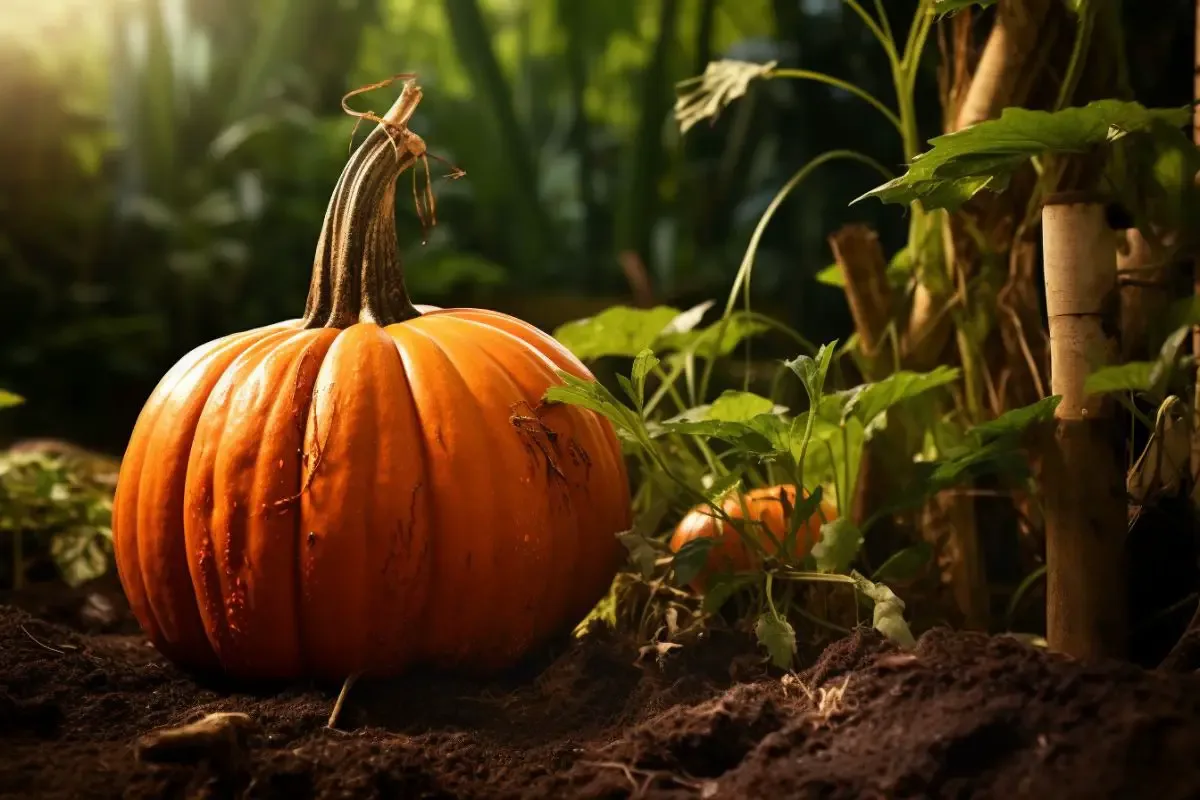
1. Nutritional Value
Pumpkins are packed with vitamins and nutrients that are beneficial for your health. They are a great source of Vitamin A, which is essential for eye health, and their seeds are rich in antioxidants and magnesium. Incorporating pumpkins into your diet is a delicious and nutritious way to boost your health.
2. Educational Experience
Growing pumpkins can be an incredibly educational experience, especially if you have children. It’s a chance to teach them about the lifecycle of a plant, from seed germination to full-grown pumpkin. Plus, the relatively large size of pumpkin seeds makes them easy to plant, which is a fun and engaging activity for little hands.
3. Aesthetic and Versatility
Pumpkins add a beautiful aesthetic to your garden with their lush green vines and bright orange fruits. They also offer versatility in your autumn decor, serving as a staple in both Halloween and Thanksgiving decorations. Beyond decor, pumpkins can be used in a variety of culinary dishes, from soups and pies to roasted seeds and purees.
My Favorite Pumpkin Varieties
Pumpkins come in an array of shapes, sizes, and colors, providing endless opportunities for cooking, decorating, and carving. Over the years, I’ve had the pleasure of growing numerous varieties, and while it’s hard to pick favorites, there are a few that have truly captured my heart.
1. Sugar Pie
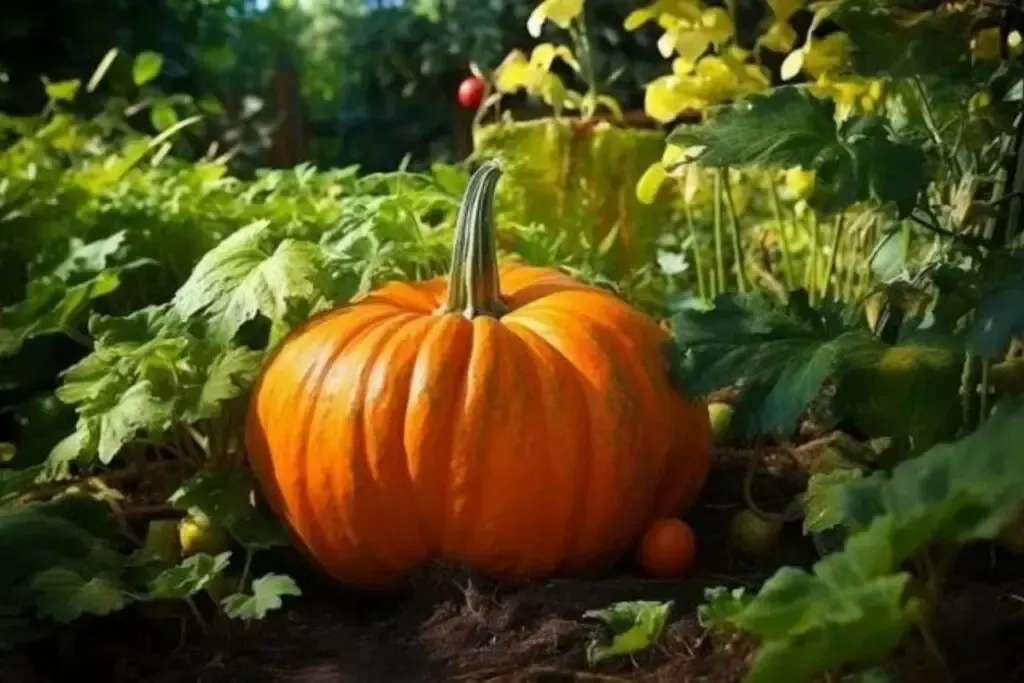
This is my go-to pumpkin for baking. ‘Sugar Pie’ pumpkins are smaller in size, usually weighing between 2-5 pounds, with a sweet, fine-grained flesh that’s perfect for pies, soups, and purees.
They have a deep orange color, both inside and out, and smooth, thin skin that’s easy to cut through. In the garden, ‘Sugar Pie’ pumpkins are relatively easy to grow, with compact vines that don’t take over the entire space.
2. Cinderella
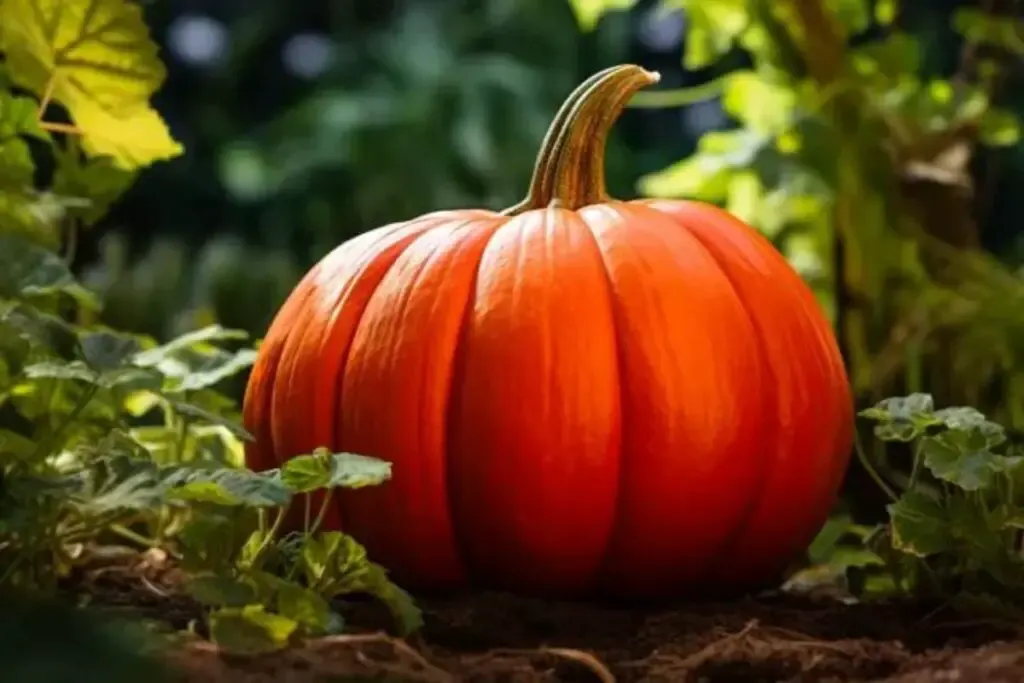
Named after the fairy tale carriage, ‘Cinderella’ pumpkins are a French heirloom variety that’s as beautiful as it is delicious. They have a unique, flattened shape and deep ribbing, with a warm, rich terracotta color.
The flesh is dense and sweet, making it a great choice for both savory and sweet dishes. In the garden, ‘Cinderella’ pumpkins are a real showstopper, with large, sprawling vines and impressive fruits that can weigh up to 25 pounds.
3. Jack Be Little
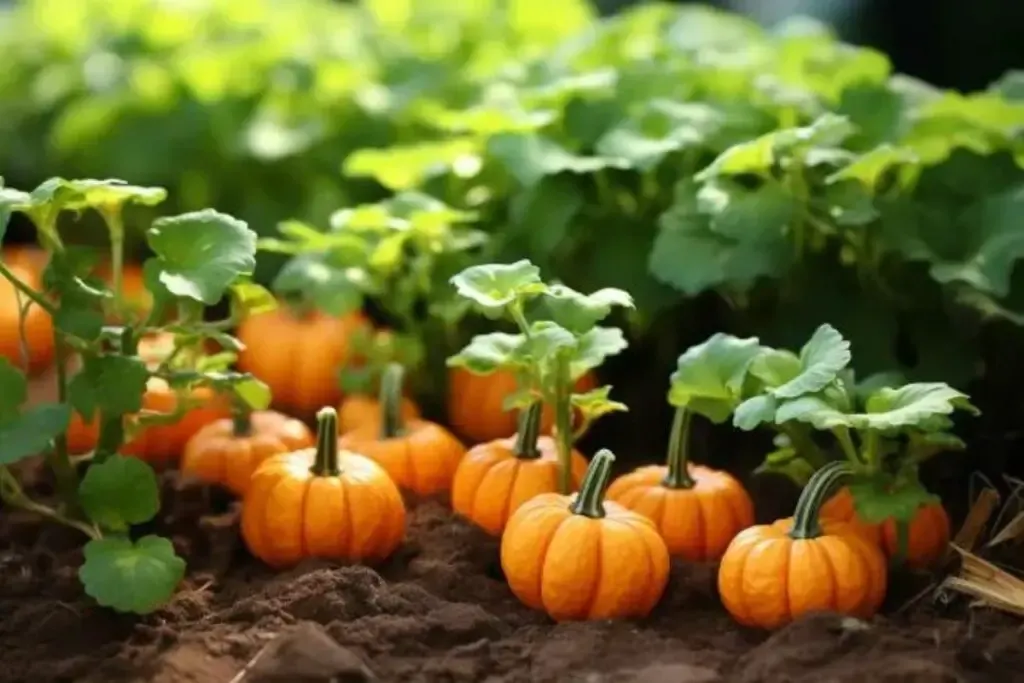
These mini pumpkins are just too cute to resist! ‘Jack Be Little’ pumpkins are small, typically weighing around 8 ounces, with a flat, ribbed shape.
They have a bright orange color and a sweet, nutty flavor that’s perfect for stuffing or using as individual serving dishes. In the garden, these pumpkins are fun and easy to grow, making them a great choice for kids or those with limited space.
Pumpkin Care
Pumpkins are a rewarding crop to grow, but they do require some special care to thrive. Here’s a comprehensive guide to ensure your pumpkins reach their full potential.
Planting
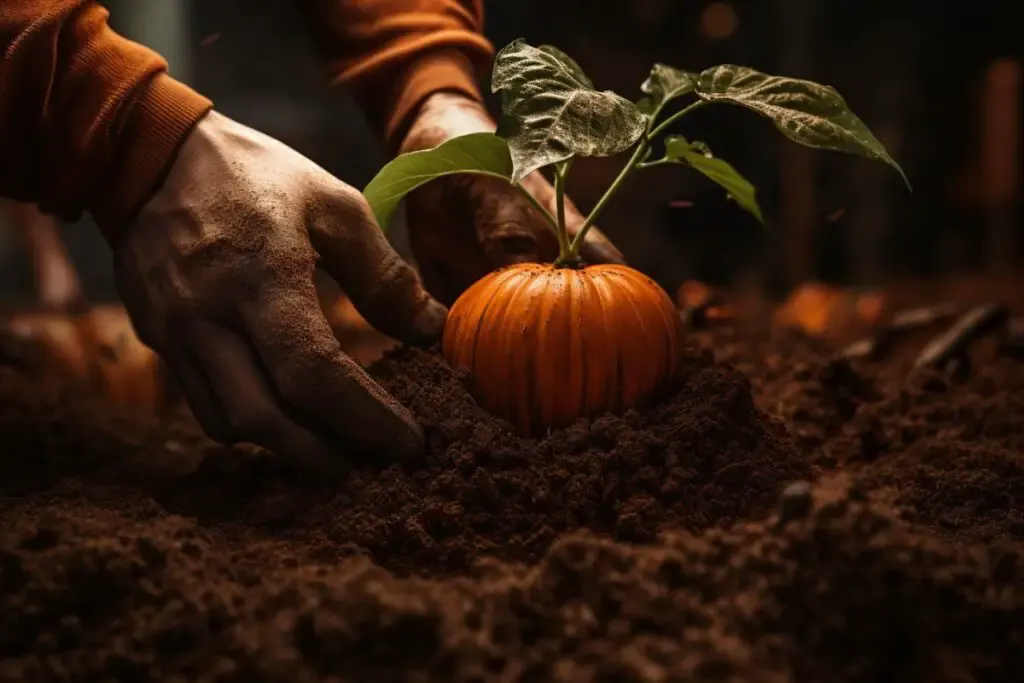
Pumpkin seeds should be planted in late spring or early summer, depending on your local climate. Choose a day when the soil is warm and there’s no risk of frost, as pumpkins are very sensitive to cold temperatures.
Plant the seeds 1 inch deep in small mounds, with 4-6 seeds per mound. Space the mounds about 4-8 feet apart, as pumpkins need plenty of room to spread out. Once the seedlings emerge, thin them out, leaving the two strongest plants in each mound.
Light
Pumpkins are sun worshippers and require a lot of sunlight to grow properly. Make sure to plant them in a spot that receives at least 6-8 hours of direct sunlight each day.
The more sunlight they get, the better they will produce. Lack of sunlight can lead to small, poorly formed pumpkins.
Soil
Pumpkins prefer well-draining soil that is rich in organic matter. A pH level of 6.0 to 6.8 is ideal. Before planting, enrich the soil with a generous amount of compost or well-rotted manure.
This will provide the plants with the nutrients they need to grow strong and healthy. Pumpkins are heavy feeders, so the richer the soil, the better.
Water
Pumpkins need a lot of water, especially when they are setting fruit. Water deeply and consistently, providing 1-2 inches of water per week.
Try to water the plants at the base to keep the foliage dry, which can help prevent disease. A drip irrigation system or soaker hose is ideal for this. Be careful not to overwater, as this can lead to root rot.
Temperature and Humidity
Pumpkins thrive in warm temperatures, with ideal daytime temperatures ranging from 70-85°F (21-29°C). Nighttime temperatures should not drop below 55°F (13°C).
High humidity can lead to fungal diseases, so it’s important to provide good air circulation around the plants. If you live in a particularly humid climate, you may need to take extra precautions, such as using a fungicide or planting disease-resistant varieties.
Fertilizer
Pumpkins are heavy feeders and benefit from regular feeding. Use a balanced, all-purpose fertilizer every 2-4 weeks. Once the plants start to flower, switch to a high-phosphorus fertilizer to encourage fruit development. Be careful not to over-fertilize, as this can lead to lush foliage but poor fruit development.
Harvesting Pumpkin
Harvesting pumpkins is one of the most satisfying parts of growing them. When the pumpkins have reached their desired size and the rind is hard, they are ready to be picked. Make sure to leave a few inches of stem attached to the pumpkin, as this will help it store longer.
Use a sharp knife or pruning shears to cut the stem, being careful not to damage the pumpkin. Once harvested, allow the pumpkins to cure in the sun for a week to harden the skin. After curing, store them in a cool, dry place. If stored properly, pumpkins can last for several months.
Pruning
Pruning your pumpkin vines can help improve air circulation and reduce the risk of disease. It can also help direct the plant’s energy towards fruit production, resulting in larger pumpkins.
To prune, simply cut off any excess vines and leaves, being careful not to damage the main stem. You can also prune away any small or misshapen pumpkins to allow the plant to focus on the larger, healthier ones.
Propagating
Pumpkins can be propagated from seed or by taking cuttings from an existing plant. To propagate from seed, simply collect the seeds from a ripe pumpkin, clean them, and allow them to dry. Once dry, the seeds can be planted directly in the ground or started indoors.
To propagate from cuttings, take a cutting from a healthy vine and plant it in the soil. Keep the soil moist until the cutting has rooted and established itself.
How to Grow Pumpkins From Seed
Growing pumpkins from seed is a simple and rewarding process. To start, select a high-quality seed variety and plant the seeds in well-draining soil. Water the seeds well and keep the soil consistently moist until the seedlings emerge.
Once the seedlings have a few true leaves, thin them out, leaving the strongest plants. From there, simply follow the pumpkin care guide outlined above to ensure your plants thrive.
Growing in Pots
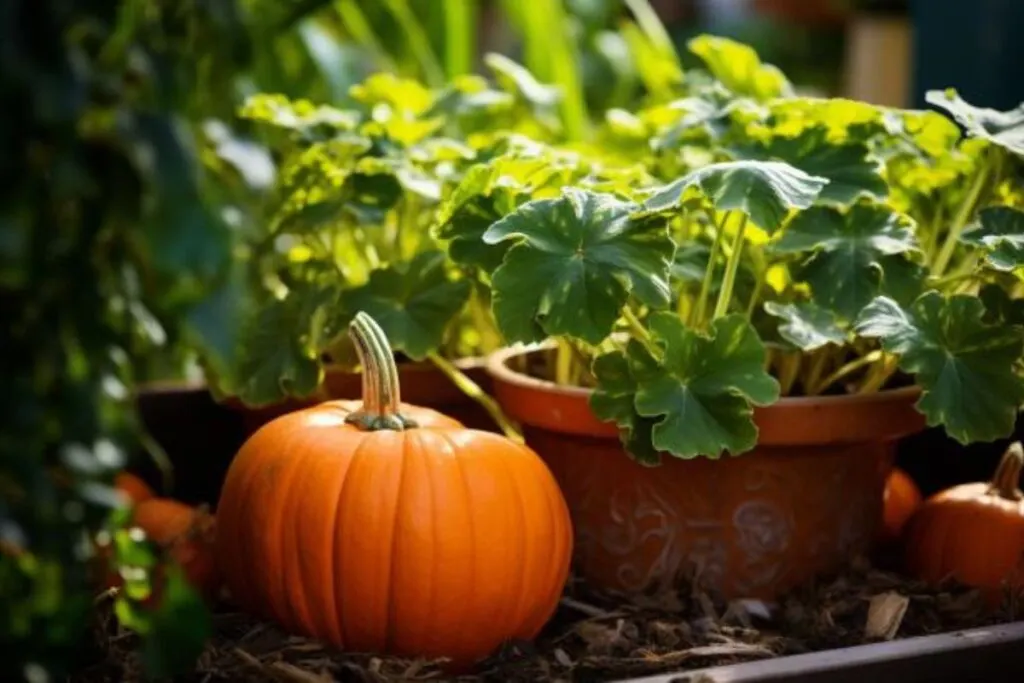
Growing pumpkins in pots is a great option for those with limited space. To grow pumpkins in pots, select a large container (at least 5 gallons) with drainage holes. Fill the container with a high-quality potting mix and plant the pumpkin seeds or seedlings.
Water well and place the container in a spot that receives plenty of sunlight. From there, follow the same care instructions as you would for pumpkins grown in the ground. Keep in mind that pumpkins grown in pots may need more frequent watering, as the soil can dry out quickly.
Overwintering
Overwintering pumpkins can be a bit tricky, as they are not frost-tolerant and require specific conditions to survive the colder months.
If you live in a region with mild winters, you may be able to leave your pumpkins in the garden and cover them with a frost blanket when cold temperatures are expected. However, in colder climates, it’s best to harvest your pumpkins before the first frost and store them in a cool, dry place.
When storing pumpkins, make sure to choose ones that are free of blemishes and bruises, as these can lead to rot. Place the pumpkins in a single layer, making sure they are not touching each other, and store them at a temperature between 50-55°F (10-13°C). With proper storage, your pumpkins can last several months, allowing you to enjoy them throughout the winter.
Transplanting
Transplanting pumpkins can be a delicate process, as they have fragile roots and do not respond well to disturbance. If you need to transplant your pumpkins, do so when they are still small and before the vines have become too large.
To transplant, water the plant well and gently dig around the root ball. Lift the plant, making sure to keep as much of the root ball intact as possible, and move it to the new location. Plant the pumpkin at the same depth it was at before and water well.
When transplanting pumpkins, it’s important to choose the right time and conditions. The best time to transplant is on a cloudy day or in the evening when the sun is not as intense. This will help reduce the stress on the plant and increase the chances of successful transplanting.
Common Pests & Diseases
Pumpkins are susceptible to a variety of pests and diseases, which can affect the health and yield of your plants. Some of the most common pests include aphids, cucumber beetles, and squash vine borers. To combat these pests, keep your garden clean and free of debris, and consider using row covers to protect your plants.
If pests become a problem, you can use insecticidal soap or neem oil to control them. In addition to pests, pumpkins are also susceptible to diseases such as powdery mildew, downy mildew, and bacterial wilt.
To prevent these diseases, make sure to water your plants at the base, rather than from above, and ensure good air circulation around your plants.
If diseases do occur, remove and destroy any affected plants, and consider using a fungicide to protect your remaining plants. By being vigilant and taking preventative measures, you can help protect your pumpkin plants from common pests and diseases, ensuring a healthy and productive garden.

